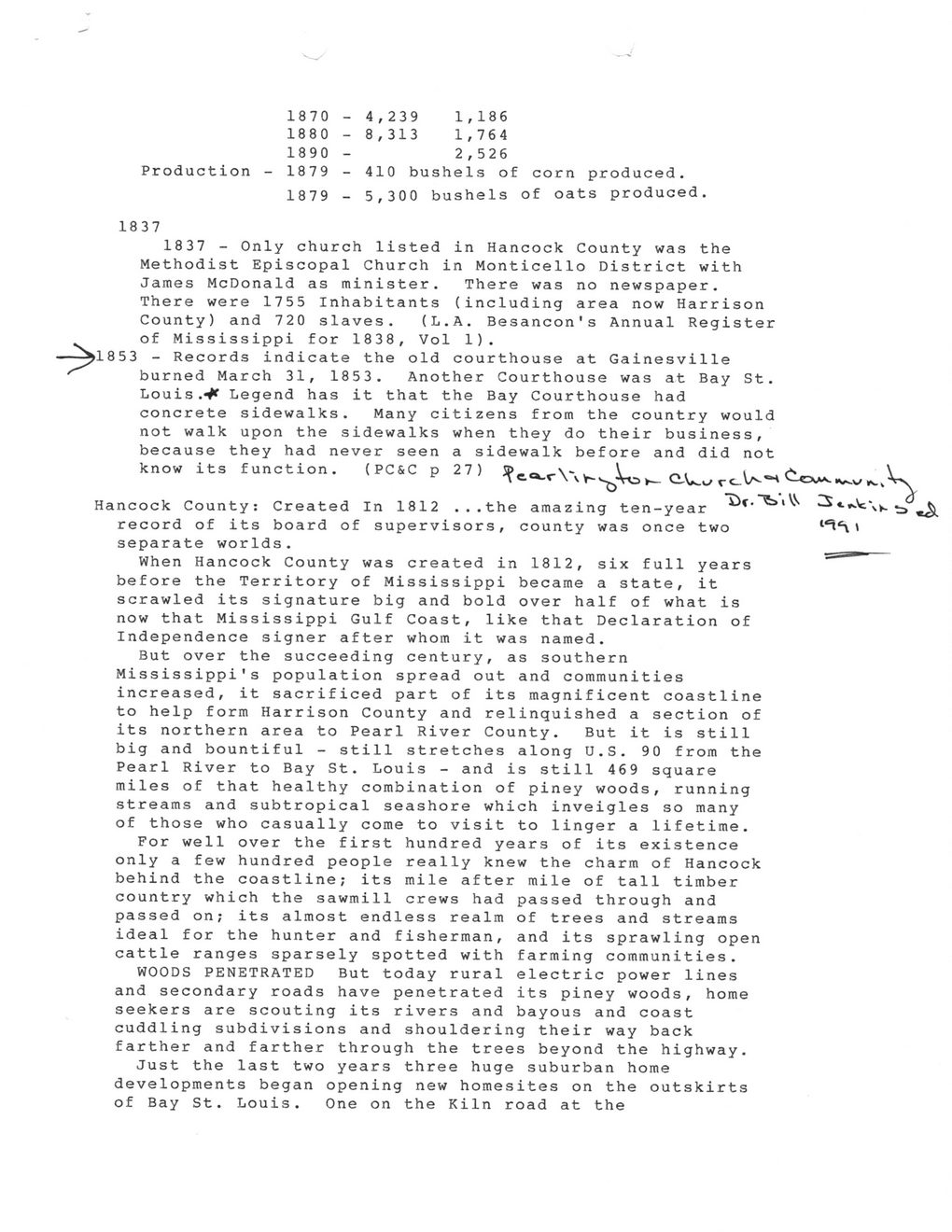This text was obtained via automated optical character recognition.
It has not been edited and may therefore contain several errors.
1870 1880 1890 4,239 1,186 8,313 1,764 Production - 1879 1879 2,526 410 bushels of corn produced. 5,300 bushels of oats produced 1837 1837 - Only church listed in Hancock County was the Methodist Episcopal Church in Monticello District with James McDonald as minister. There was no newspaper. There were 1755 Inhabitants (including area now Harrison County) and 720 slaves. (L.A. Besancon's Annual Register of Mississippi for 1838, Vol 1). -^18 5 3 - Records indicate the old courthouse at Gainesville ^ burned March 31, 1853. Another Courthouse was at Bay St. Louis .4* Legend has it that the Bay Courthouse had concrete sidewalks. Many citizens from the country would not walk upon the sidewalks when they do their business, because they had never seen a sidewalk before and did not Hancock County: Created In 1812 ...the amazing ten-year record of its board of supervisors, county was once two separate worlds. When Hancock County was created in 1812, six full years before the Territory of Mississippi became a state, it scrawled its signature big and bold over half of what is now that Mississippi Gulf Coast, like that Declaration of Independence signer after whom it was named. But over the succeeding century, as southern Mississippi's population spread out and communities increased, it sacrificed part of its magnificent coastline to help form Harrison County and relinquished a section of its northern area to Pearl River County. But it is still big and bountiful - still stretches along U.S. 90 from the Pearl River to Bay St. Louis - and is still 469 square miles of that healthy combination of piney woods, running streams and subtropical seashore which inveigles so many of those who casually come to visit to linger a lifetime. For well over the first hundred years of its existence only a few hundred people really knew the charm of Hancock behind the coastline; its mile after mile of tall timber country which the sawmill crews had passed through and passed on; its almost endless realm of trees and streams ideal for the hunter and fisherman, and its sprawling open cattle ranges sparsely spotted with farming communities. WOODS PENETRATED But today rural electric power lines and secondary roads have penetrated its piney woods, home seekers are scouting its rivers and bayous and coast cuddling subdivisions and shouldering their way back farther and farther through the trees beyond the highway. Just the last two years three huge suburban home developments began opening new homesites on the outskirts of Bay St. Louis. One on the Kiln road at the know its function. (PC&C p 27)

Hancock County Hancock-County-courthouse-058-(6)